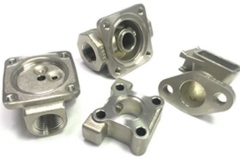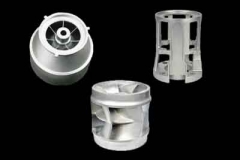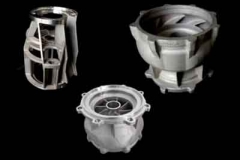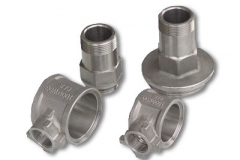Investment Casting
ForceBeyond provides high-quality custom ferrous and non-ferrous investment casting parts and components for a wide range of industries. Investment casting is a very versatile process which is ideal for simple or complex, low or high volume production. We produce investment castings with material such as stainless steel, duplex stainless steel, titanium, carbon steel, tool steel, and aluminum alloys etc. Weight range from a few grams to almost one metric ton. We also provide a broad range of secondary service including machining, surface finishing etc.
What Is Investment Casting?
Investment casting refers to the formation of ceramics around a wax pattern to form a shell for casting molten metal. Once wax patterns are created, they are melted into the gate system, immersed in slurry and sand to form a layered shell, and then replaced by molten metal such as stainless steel, aluminum, or the like.
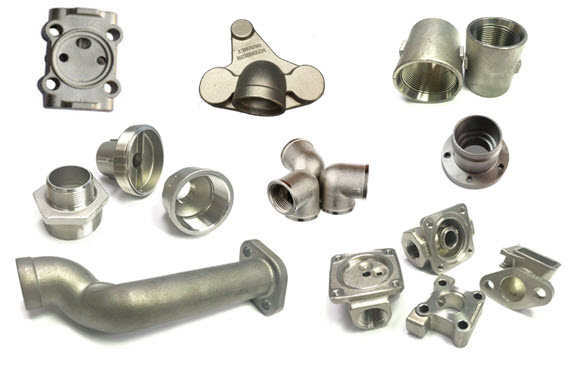
How are Investment Castings Made?
Investment casting involves creating an original wax model, building the image with plaster and successive layers until a strong shell surrounds the model. After melting the wax, pour the molten gold or bronze into the mold to create a perfect replica of the original wax pattern. Investment casting provides economical undercutting, high resolution, sophisticated detail and smooth surface finish compared to machining separations. In most cases, investment casting is the only way the part can be made economically.
Watch the video of our investment casting foundry to learn how investment castings such as stainless steel castings, titanium castings and carbon steel castings are made. Video also available on youtube.com.
Linear Tolerance of Investment Casting
Normal linear tolerances of investment casting are as follows as a general rule: Up to 1” +/- .010”, for each additional inch up to ten inches +/- .003” per inch. For dimensions greater than ten inches allow +/- .005” per inch. Secondary operations such as straightening and sizing will produce closer dimensional tolerance.
| Dimensions | Normal Tolerance of Investment Casting |
|---|---|
| Up to 1” | +/- .010” |
| Up to 2” | +/- .013” |
| Up to 3” | +/- .016” |
| Up to 4” | +/- .019” |
| Up to 5” | +/- .022” |
| Up to 6” | +/- .025” |
| Up to 7” | +/- .028” |
| Up to 8” | +/- .031” |
| Up to 9” | +/- .034” |
| Up to 10” | +/- .037” |
| > 10” | allow +/- .005” per inch |
An exception to the linear tolerance exists on wall thickness where the tolerance must be a minimum of +/- .020”.
Advantages of Investment Casting
- The mold surface featuring low roughness and the material offering ample refractory strength and chemical inertness can yield high quality surface castings
- The mass accuracy factor of the castings can be as high as 0.85-0.95 for less metal machined and fewer metal shavings
- Investment castings use the materials with no mold to be disassembled when removing them; mold materials are highly flame retardant and can give a better fill-in if high-temperature heated before pouring
- The metal load of the investment casting process is 90-95%, a value similar to that of Injection Moulding
- Fewer environmental hazards from the foundry process
- Sizes: 0.1 in to more than 3 feet
- Weights: a few grams to one metric ton
- Surface: very smooth finish
- Tight tolerances
- Reliable process controls and repeatability
- Design and casting versatility
- Efficient production
- Affordable tooling
- Material variety
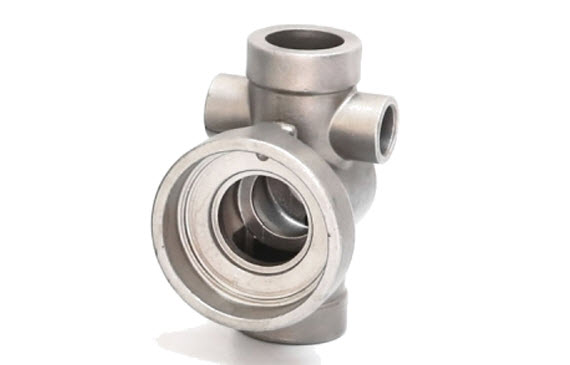
| Material | Grade | Common Application |
|---|---|---|
| Stainless Steel | 304 | Housings, bodies. SS304 is widely used in medical, plumbing, watering, mining and petrochemical industries as the standard for cleanliness as well as corrosion resistance. |
| 316 | Housings, gears, plates. Superior corrosion resistance of SS316 makes it ideal for many applications including automotive, food & diary and petrochemical environments. | |
| 304L/316L | Similar to other 300 series steel, low carbon makes it softer but more corrosion resistant. Ideal industries are such as food & dairy, medical and petrochemical. | |
| 410 & 416 | Housings, bushings, handles, brackets. 400 series steels are high strength and very machinable. They will tend to break rather than bend under intense pressure. Ideal industries are automotive, food & dairy and various machine tools. | |
| 17-4 | Very strong. Can be used in military, various machine tools etc. | |
| Duplex Stainless Steel | 2205 | Duplex stainless steel 2205 consists of a two-phase microstructure — both ferritic stainless steel and austenitic stainless steel. Nitrogen is enhanced in Duplex 2205 comparing to other duplex stainless steel. |
| Super Duplex Stainless Steel | 2507 | Desalination, marine, pulp & paper mill, chemical process pressure vessels, heat exchangers and piping, oil and gas industry, offshore oil industry. |
| Zeron 100 | Desalination, flue-gas desulfurization, oil and gas industry, pollution control, chemical, pharmaceutical, mining and mineral industries, pulp and paper, power generation, marine industries | |
| Titanium | Grade 2 | Chemical process, marine etc. |
| Grade 5 | Aerospace, medical, marine and chemical processing industries and oil field services. | |
| Carbon Steels | 1000 series | Softest of common carbon steels. More likely to bend rather than break under intense pressure. Commonly used to make cranks, handles, and braces. |
| 4100 series | High strength material that is used when deformation of a part is not allowed. Commonly used to cast firearm components and ratchets. | |
| 8600 series | 8600 series is stronger than 1000 series but will bend prior to breakage. Commonly used to cast firearm components, housings, and nozzles. | |
| Tool Steels | A2, S7, D2 | Used when parts will be under higher heat due to less distortion. Not corrosion resistant like stainless steel. |
| Aluminum Alloys | A356 | Housing, covers, plates. Aluminum is lightweight and extremely corrosion resistant like stainless steel. |
Secondary Operations and Treatment of Investment Castings We Offer
- Polished zinc plating, nickel plating, electroplating, chrome plating
- Anodizing, phosphating, acid treatment, polishing
- High precision machining
- Broaching, milling, drilling, tapping
- Surface grinding, sand blasting, powder coating
- Heat treatment
Investment Casting Solutions & Parts
Our investment casting solutions include stainless steel casting, duplex stainless steel casting, super duplex stainless steel casting, titanium casting, carbon & alloy casting etc. Please click links below for detailed information.
Sources
- American Foundry Society. “Metal Casting”
- Wikipedia. “Investment Casting“, “Sand Casting“
- efunda. “Sand Casting“
- The Investment Casting Institute. “What is Investment Casting?“
- The Library of Manufacturing. “Investment Casting“
- Forging Industry Association “Forging Industry“
Our Internal Resources for Die Casting, Investment casting, Forging and Sand Casting
- Die Casting
- Aluminum Die Casting
- Zinc Die Casting
- A356 Aluminum Casting with T6 Heat Treatment
- Magnesium Die Casting
- Investment Casting
- Stainless Steel Casting
- Duplex Stainless Steel Casting
- Super Duplex Stainless Steel Casting
- Titanium Casting
- Carbon & Low Alloy Casting
- Forging
- Cold Forging
- Hot Forging
- ECO BRASS C69300 Brass Forging
- Sand Casting (Aluminum Sand Casting, Ductile Iron Sand Casting, Gray Iron Sand Casting)
- Specialty Fittings and Fasteners
- Precision CNC Machining and Secondary Operations

